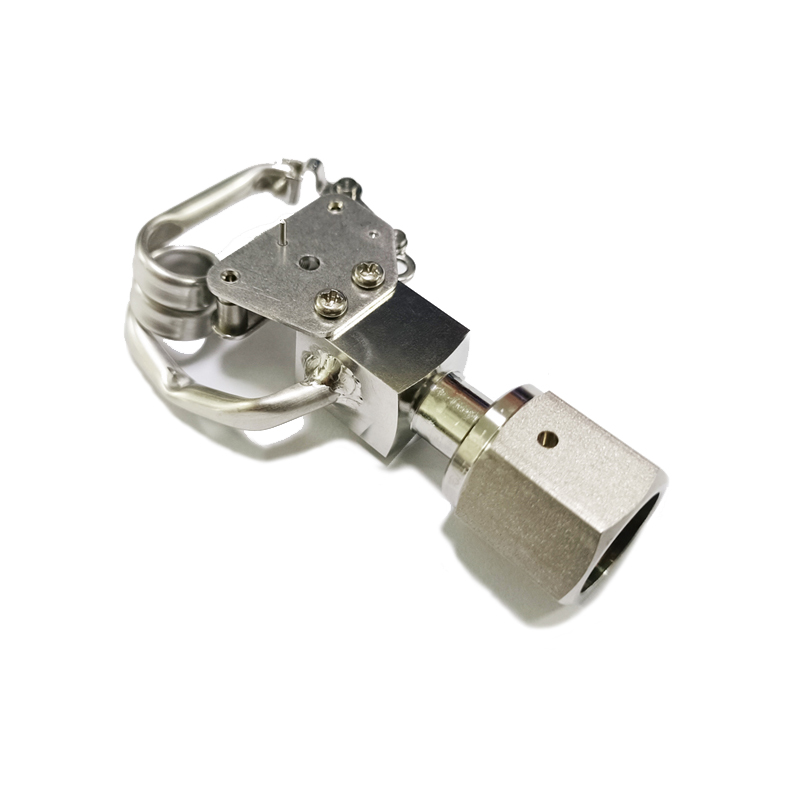
Oca . 19, 2025 05:48 Back to list
Differential Pressure Gauge-Magnetic piston francois typeYCC-80.03(851.3)
Differential and absolute pressure gauges are essential tools in various industries, each serving a distinct purpose in measuring pressure. Understanding the differences between them is crucial for selecting the right gauge for a specific application, ensuring accurate readings and optimal system performance.
The construction of these gauges also varies. Differential pressure gauges typically feature two pressure ports for connecting the high and low-pressure sides, and they may include features like a diaphragm or bellows to detect pressure changes accurately. Absolute pressure gauges, however, generally have a single port and a sealed reference chamber to maintain a constant vacuum, allowing them to provide precise measurements unaffected by ambient conditions. When selecting a pressure gauge, accuracy, range, and durability are critical considerations. For differential pressure gauges, it is important to ensure that the gauge can handle the expected pressure difference without compromising accuracy. Similarly, for absolute pressure gauges, one must consider factors such as temperature fluctuations and potential exposure to corrosive substances, which could affect the material choice and gauge performance. In terms of maintenance, differential pressure gauges require regular inspections to ensure both pressure sides are functioning correctly and that there are no leaks or blockages. Absolute pressure gauges, while generally more robust in construction, may require periodic calibration to maintain accuracy over time. In summary, the decision to use a differential or absolute pressure gauge should be informed by the specific needs of the application, including the desired accuracy, pressure range, environmental conditions, and maintenance capabilities. By understanding these differences, industries can ensure they are using the most appropriate tool for their specific application, thereby enhancing system reliability and performance.


The construction of these gauges also varies. Differential pressure gauges typically feature two pressure ports for connecting the high and low-pressure sides, and they may include features like a diaphragm or bellows to detect pressure changes accurately. Absolute pressure gauges, however, generally have a single port and a sealed reference chamber to maintain a constant vacuum, allowing them to provide precise measurements unaffected by ambient conditions. When selecting a pressure gauge, accuracy, range, and durability are critical considerations. For differential pressure gauges, it is important to ensure that the gauge can handle the expected pressure difference without compromising accuracy. Similarly, for absolute pressure gauges, one must consider factors such as temperature fluctuations and potential exposure to corrosive substances, which could affect the material choice and gauge performance. In terms of maintenance, differential pressure gauges require regular inspections to ensure both pressure sides are functioning correctly and that there are no leaks or blockages. Absolute pressure gauges, while generally more robust in construction, may require periodic calibration to maintain accuracy over time. In summary, the decision to use a differential or absolute pressure gauge should be informed by the specific needs of the application, including the desired accuracy, pressure range, environmental conditions, and maintenance capabilities. By understanding these differences, industries can ensure they are using the most appropriate tool for their specific application, thereby enhancing system reliability and performance.
Share
Latest news
-
High-Accuracy Differential Pressure Gauge Diaphragms OEM Factories & Services
NewsMay.24,2025
-
Water Fire Extinguisher Pressure Gauge Durable Supplier Solutions
NewsMay.24,2025
-
Handheld Digital Differential Pressure Gauge Portable, High-Accuracy & Real-Time Data
NewsMay.24,2025
-
Digital Pressure Gauge RS Components for Semiconductor & Chip Industries
NewsMay.23,2025
-
Industrial Differential Pressure Gauges Global Supplier & Pricelist
NewsMay.23,2025
-
Bourdon-Type Differential Pressure Gauges High Accuracy & Affordable Pricing
NewsMay.22,2025
